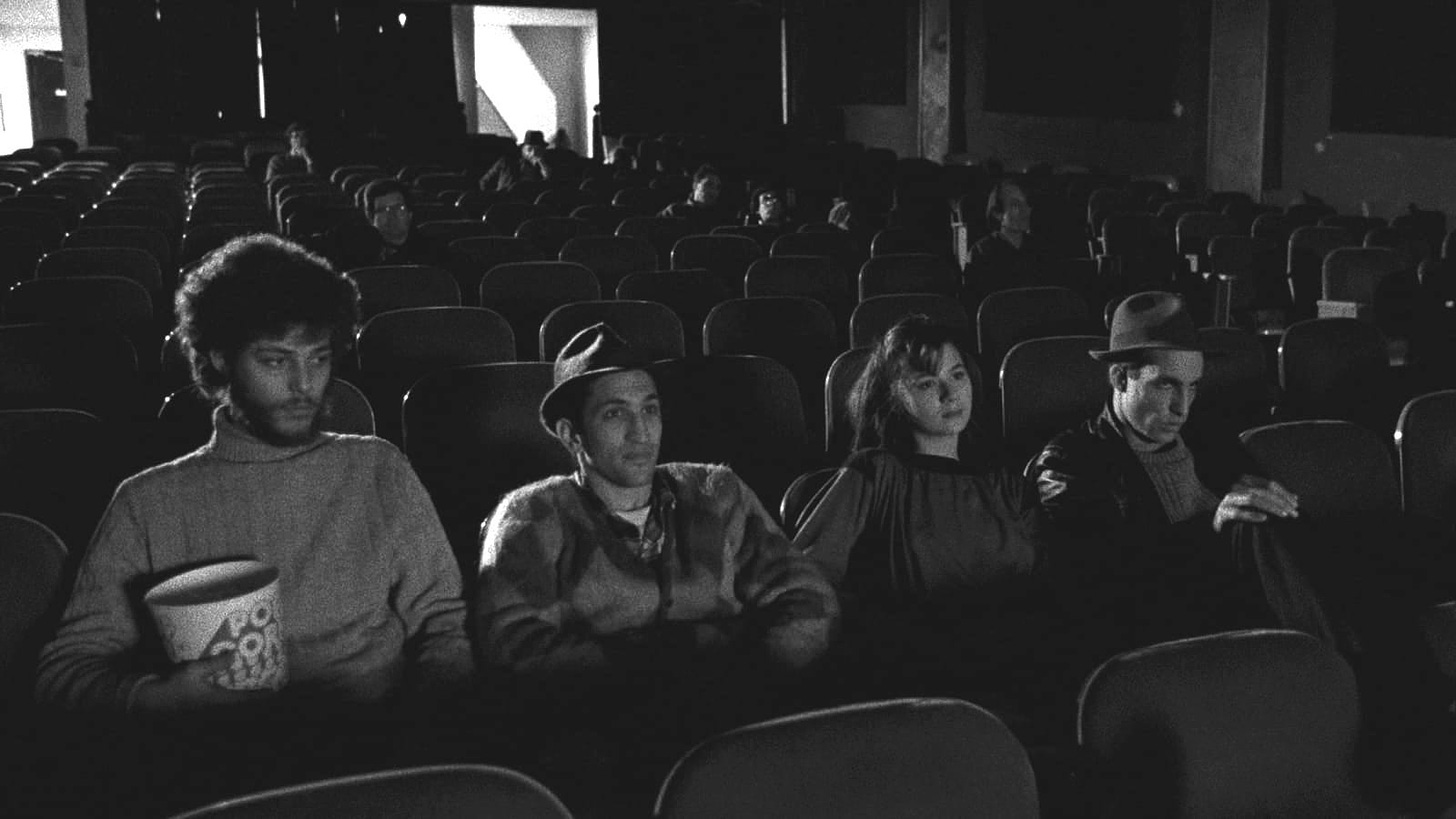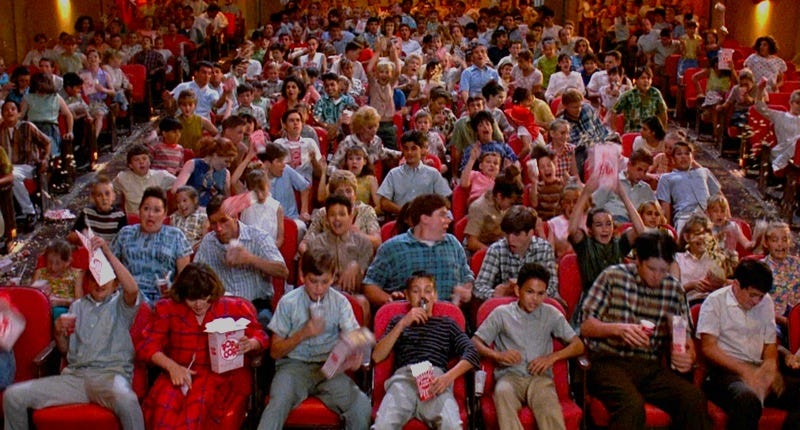Was I Wrong to Take a Stand Against Reserved Seating in Movie Theaters?
We're a decade into a movie theater trend I used to hate. But time may have proven me wrong (or at least not entirely right).
Last Friday, my family and I decided to go see Are You There God? It’s Me, Margaret and we didn’t have to worry about anything. Earlier in the day, I opened the app of a popular national theater chain to which I now pay a monthly fee so I can enjoy some VIP benefits, picked a screening, and bought three tickets for a 7 o’clock show. Our seats were together at the end of the row closer to the back than the front (always my preferred spot), and though we arrived at the theater with time to spare after dinner at a popular chain restaurant within walking distance (home of the puzzling flavor option “Asian Zing”), we didn’t have to. It was a stress-free evening at the movies (and the movie was pretty great).
It also left me a little rattled and wondering what I’d become.
In 2015, while working at The Dissolve, I wrote an op-ed that would prove to be one of the most divisive pieces I’ve ever written (and I once wrote an extremely unpopular mixed review of a Goonies Blu-ray): “Let’s Stop Reserved Movie Theater Seating.” In 2023, the very existence of such a piece probably needs some context. It was, as they say, a different time, one in which reserved seating wasn’t yet common but was fast becoming the norm. Just two years earlier, writer (and airline pilot) Mark Vanhoecker wrote a piece for Slate laying out the case for reserved seating, which had already become popular in many European and Asian cities. It was, and remains, a clear and precise argument for reasons beyond trend-hopping. Here’s how I summed up Vanhoecker’s case back in 2015:
[I]t eliminates the need to arrive early at the theater, it guarantees that parties who arrive together will get to stay together, it cuts down on awkward “Is this seat taken?” interactions, and it eliminates the need for moviegoers to hold seats through awkward methods like draping coats and hats over seats.
What kind of dummy could argue with all that, right? But I still feel like I made a pretty good case for the other side, albeit one grounded at least partly in my own moviegoing neuroses.
My objection to the system not working, of moviegoers regularly sitting in the wrong seats and having to be told to move, now seems misguided (though it was grounded in my own experiences at the time). But I still live in fear of being seated next to The Wrong People: talkers, texters, and, for a while at least, the unmasked. And this fear isn’t entirely misplaced. When I went to see The Green Knight, which arrived in that post-vaccine moment when we were still getting comfortable with the idea of going back to theaters, I carefully selected a seat as far away from other occupied seats as possible. When, as the trailers played, an unmasked audience member sat next to me and began a session of enthusiastic snacking, I hurriedly checked the ticket app and moved to another unclaimed seat.
Did I overreact? Yeah, probably. It was a more fearful era and I always erred on the side of caution. And, if you can remove COVID-19 concerns from the equation (which was pretty much impossible to do in 2021), I had nothing else to worry about. The theater I was attending was of the sort that minimized the distractions of others thanks to deep recliner seats that felt like islands onto themselves and minimized any distractions created by my fellow moviegoers. In some ways, I was still in a 2015 frame of mind. Now dominated by plush, stadium-style seating designed to make audiences feel like they were still at home, theaters had lapped me.
Yet if history has blown my practical objections to reserved seating out of the water eight years later, I think my philosophical objections still stand. The normalization of reserved seating has changed something fundamental about the idea of moviegoing. What was once a casual night out now has the air of an event to be treated with the same planning and strategizing of, say, going to see a Lizzo show or Blackhawks game.
This feels part of an unhealthy cycle. As theaters become increasingly dominated by big franchise movies and screen-filling special effects, the act of moviegoing becomes purely an act of gazing at a big-budget spectacle. You can still decide, spur of the moment, to pop into a movie theater to see a new movie just to see a movie and not because months of advertising and promotion have told you that, say, Guardians of the Galaxy Vol. 3 will be in theaters on May 5th. But it increasingly doesn’t feel normal anymore.
What’s more, it makes movies feel less than ever like the democratic entertainment that they’ve been from the beginning. Sure, it could be a pain to show up early to get a good seat as the crowd piled in, but this was the plight faced by everybody going to the movies. The combination of rising prices and the event-ization of going to the movies makes it feel less like a truly popular art form than ever. AMC’s February announcement that it would begin experimenting with “sightline pricing,” which requires ticket purchasers to pay a premium for a theater’s better seats, only reinforced that feeling. We come to this place for magic, but the deep-pocketed can get a little more magic than others, apparently. Even those comfy seats contribute to the sense that we’re part of a communal experience. (Though, at the height of my daughter’s let’s-go-see-anything phase of movie fandom, I sometimes found myself grateful for their nap facilitating abilities. Maybe I’ll actually watch The Secret Life of Pets 2 someday.)
So, was I wrong eight years ago? In some ways, sure, I’ll admit to being wrong. It would be hypocritical not to. I’m now regularly taking advantage of reserved seating; at the very least, it’s kind of nice to know that I can skip the trailers and still get a decent seat, particularly since I’ve seen some current trailers way too many times. (Hello, Transformers: Rise of the Beasts, my old friend.) But, on a deeper level, was I really wrong? Reserved seating now looks like an element of a bigger issue. For all the comforts and advantages of modern movie theaters, reserved seating among them, some of the casualness has been lost. The need to pick a seat in advance feels like yet another barrier to entry to moviegoing, a development that makes it feel less like a casual, everyday experience than ever before. It’s still a great night out, though, if you plan carefully. With luck, that will never change.







Me habitually late to movies, dating back to childhood, when Papa Cookie hustling us through buying cheaper snacks at convenience store and then driving too fast to get to movie on time, which now just feel like traditional part of going to movies. So me do like knowing there will actually be seat waiting for me.
That being said, me love being in first two rows, partly because googly eyes not have good distance vision, but mostly because me love for screen to fill up entire field of vision. Me saw Return of Jedi in front row because, as per tradition, we got there late. But those space battles felt like they were going on all around you, and it made experience so much better, so me never want back.
Which is longwinded way of saying, if me not were able to reserve seats, it not really would matter much, because those front rows fill up last. But me still like to do that.
That being said, sightline pricing is bullshit. Going to movies has always been, and should always be, democratic, equalizing experience. Millionaire, miser, and monster can sit side-by-side and have same experience.
I am still with you (esp. 2015 you) in being oppose to assign seating and I’m glad that most of the indie movie theaters in new york (film forum, IFC, lincoln center) don’t do assigned seating. Admittedly, I mostly go to movies by myself or with one friend and I’m
not super picky. Mostly I like to step into the theater, look at the size of the screen, the layout of the room and then pick my spot.